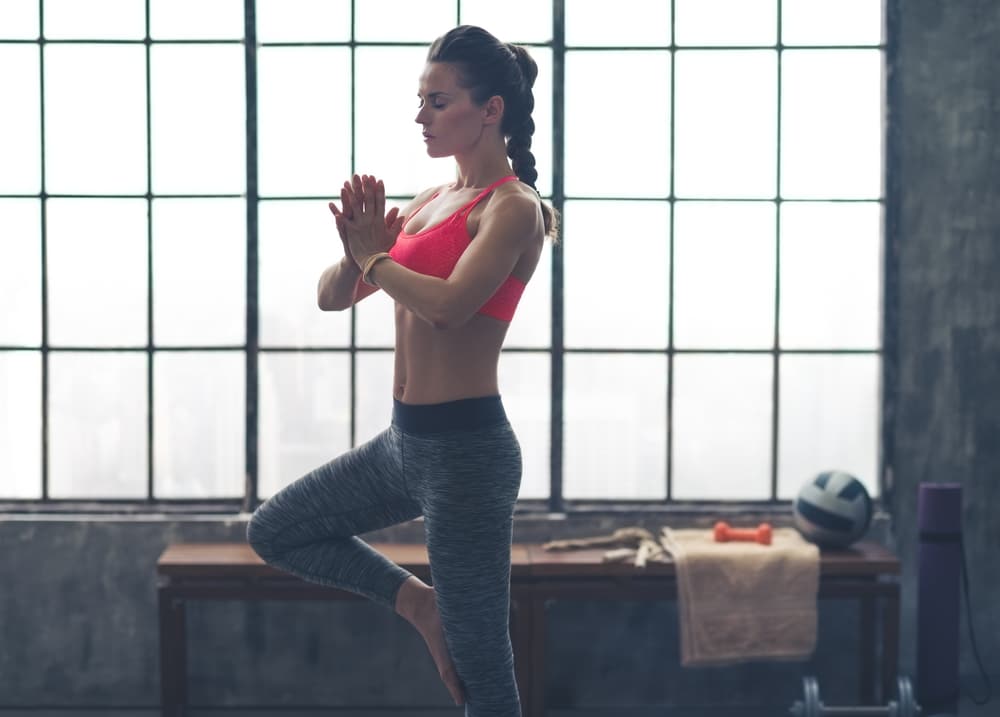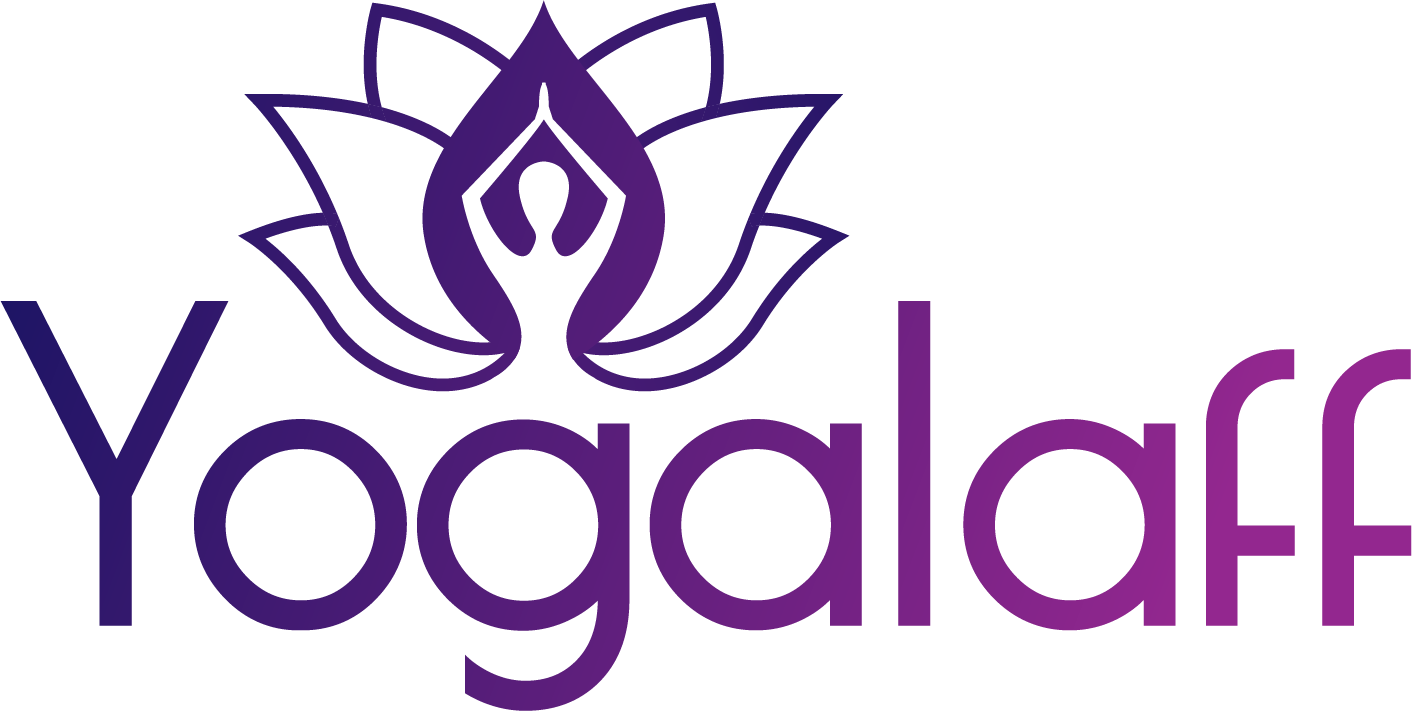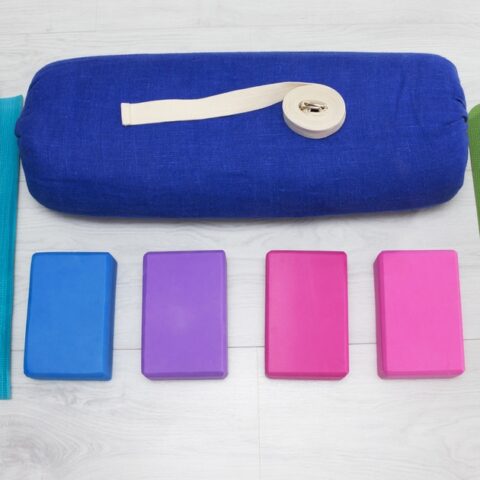Have you noticed yoga studios on every corner of your city or town?
Or maybe you see yoga all over television and you just cannot wrap your head around the reason why this activity has swept the globe.
You have been feeling anxious and stressed lately and you have seemingly tried everything, but nothing has helped you. Then you remember that activity you have been seeing everywhere.
Yoga.
Now you want to give it a try and see what all of the fuss is about, but you don’t know if you need to bring specific yoga gear or even where to begin.
As a beginner, you may feel intimidated and confused as to where to begin when it comes to searching for the best yoga clothes and equipment to bring to your first yoga class. The other intimidating factor, other than being a beginner is to try and understand the different yoga styles and what you will need to bring to each styles’ class.
 The best advice is to do your research on which yoga style you would like to try then go from there, don’t worry about the styles that you are not trying yet.
The best advice is to do your research on which yoga style you would like to try then go from there, don’t worry about the styles that you are not trying yet.
Focus on trying one or two yoga styles and then you will be able to hone in on what you will need for that particular style’s class. Below there are the basic (not so much specific) items that you will most likely need for nearly every yoga class.
Yoga Mats
Finding the best yoga mat for your practice is extremely important because you want to feel comfortable every time you roll out your mat.
There are a variety of yoga mats and brands, all with different features, bells, and whistles and you just have to find the one that speaks to you.
For example, we’ve reviewed the best non-slip yoga mats, yoga mats for tall people, yoga mats for hot yoga, yoga mats for bad knees, yoga mats for wrist pain, lightweight travel yoga mats and yoga mat alternatives.
I know that’s several articles discussing yoga mats, but depending on your specific needs, the type of yoga mat that you purchase can vary significantly.
Now, you may have to try many different mats to finally arrive at the best one for your specific needs, but it is all worth it. You have to figure out what yoga style you will be practicing most then decide what features are the best for you during your yoga practice each time.
Some yogis go mainly for the tops brand when searching for the yoga mats and others go for comfort, each yogi has their own preferences when searching for the perfect mat for their practice.
While it is true that most yoga studios do have their own mats for yogis, there is never a guarantee that there will be enough for all that need them or if they are cleaned daily.
Remember the mats at the studios are used by many, many people on a daily basis and while they should be cleaned and sanitized properly on a daily basis, you will want to be mindful. We’ve also written an article on how to clean your yoga mat with vinegar and water.
At the end of the day, it is best if you have your own yoga mat. Yoga mats are sold at many different prices and each price range depends on the features that mat does or does not have. The lower end on the pricing scale (i.e., cheaper mats) will get you a basic yoga mat.
This usually good enough to get you through a few sessions but will need to be replaced sooner rather than later. If you are wanting to have a daily yoga practice, it is highly recommended that you purchase a higher quality yoga mat, because it will last much, much longer.
There are some yogis that have had their yoga mat for many, many years but you also have to remember to have a normal sanitizing routine for your yoga mat. Whether it is an at-home or studio practice, you should still practice good sanitization with your yoga mat; that adds extra years to your mat.
There are many different features of a yoga mat but the most common ones that yogis look for are length, thickness, stickiness, non-slip, durability, the ability to transport fairly easily, traction, material and of course comfort.
One of the main features is comfort because no yogi wants to feel uncomfortable on their mat during any of their practices. Preferences for which features are most important vary from yogi to yogi and can change as their practice evolves.
Be mindful to focus on you, your practice and how you feel so that you can know what mat is the best fit for you but also be open for change as your own practice evolves.
The most popular brands for yoga mats are Manduka, Lululemon, Jade, and Yellow Willow. All of these brands, combined, have been making yoga mats for yogis all over the world for many, many years.
A yoga mat is quite possibly the biggest and best investment that any yogi will make during their yoga journey. Choosing the perfect yoga mat for you and your practice is extremely important and should be a decision that is not made lightly, take your time and research what would work best for you.
Yoga Clothes
Most, if not all classes require clothing of some sort for yoga class but if you are doing an at-home practice, that choice is left up to you.
Shirts, leggings, shorts, sports bras, yoga socks, hair ties and/or headbands are among the most popular clothing items that yogis come to class in. There are many different brands, styles, and sizes for these clothing items.
For example, we’ve reviewed the best yoga pants for hot yoga, yoga pants for muffin tops, best yoga pants for thick thighs, yoga socks, panties, sports bras, and the best non-see-through yoga leggings.
At the end of the day, it is most important to find what works best for you and your yoga practice, whether that is at home or at a yoga studio. Once you know what you like and what you feel most comfortable in, it is all a matter of finding brands that check all of the boxes for you.
Yoga shirts are recommended to be tight and form-fitting to prevent lifting up during certain poses such as the downward facing dog, bridge or headstand.
Tank tops, short-sleeved shirts or long-sleeved shirts are all excellent options. Some yogis sweat more than others during class and usually opt for the long-sleeved shirts.
And there are some yogis that are always cold and that’s why long-sleeve shirts are the better option for them. While other yogis prefer tank tops and short-sleeved shirts to stay cool.
Leggings that are universal and can be worn to the grocery store, library, and yoga class are the most useful because you will have many, many pairs to switch between.
The leggings that you wear for yoga should be tight and form-fitting so that you do not have to worry about anything sliding off of you, but do not forget the comfort level.
Being comfortable in yoga should be your number one priority. If you are not comfortable then you will be not focusing on anything else.
Yoga shorts should also be tight and form-fitting as to not fall off of your waist in certain poses.
If you feel more comfortable in looser shorts with tights that are connected, those are good as well. As important as shirts are, leggings and/or shorts are extremely important as well.
There are quite a few notable brands that focus on producing great yoga clothing. These brands include Body Angel Activewear, Lotus Leggings, Gaiam, Onzie Clothing and PrAna Clothing and are very focused on quality and comfort for the yogi.
Sports bras can make or break a yoga class for any women yogis. If you have the wrong sports bra on for class, you may not feel up to coming to another class. As women yogis, you need to make sure you have the proper fit, cut and bra style that suits you and that you feel good wearing.
Sports bras that hold in “the girls” are crucial, especially if you are constantly in and out of certain poses. Although yoga tends to be a low-impact activity, it is still extremely important to keep everything in place while going in and out of poses.
Knowing the type and style of bra that you like will definitely help you with your search and you will feel less intimidated.
Amazon and Target are also excellent places to start looking when you are on the search for the perfect yoga attire for your practice because they have many affordable and stylish options. Snagging the perfect yoga attire is just as important as landing the perfect yoga mat.
As a beginner yogi or one that has been off the mat for a while, you will feel more comfortable knowing there are many options for you to choose from, but not too many that you may become overwhelmed.
Once you have narrowed down what you want, the search will become less intimidating.
Yoga Accessories and Props
Yoga mats and yoga clothes are not the only items that you need for yoga class. Yoga accessories and props should also be on your list of items to bring because they are more beneficial than some think.
Yoga bags and/or yoga slings, yoga towels, yoga blocks, bolsters, blankets, yoga straps, and a yoga wheels are the most popular yoga accessories that yogis enjoy incorporating into their yoga practice.
These tools are not only for beginners but advanced yogis who still would like support in certain poses. For example, we’ve reviewed the best yoga wheels (for most yogis), yoga wheels for lower back pain, yoga towels for hot yoga, best yoga blocks, best yoga bolsters, best yoga straps, best yoga swings, and the best yoga chairs.
Yoga accessories such as yoga bags, slings, and towels are great for transporting your mat and to sanitize your mat before, during or after class.
There are some yogis that enjoy carrying their yoga mat in a yoga bag or yoga sling to stop from coming out of form. The bags usually come with pockets for extra storage to store keys, phones, and water bottles.
Yoga slings are not always friendly with storage, they are more so strictly for just yoga mat transport and the velcro straps firmly hold the mat in place. YogaOutlet is a popular place to snag good deals on yoga accessories such as yoga bags and yoga slings.
A yoga bag is also a great place to transport and store your water bottle, which you will need for class to keep hydrated.
Yoga props are the absolute best thing to ever happen for any yogi. No matter how far along in your journey you are your body is never the same during each practice.
There are some days where you will need more support than other days. Yoga blocks, straps, and yoga wheels are great for stability as well as flexibility.
In certain poses, you will need more support than in other poses and that is where the blocks, straps, and wheels come in because they provide enough support to be beneficial. But are also great because they do not stop you from your practice.
Feel free to use the yoga blocks in airplane or triangle poses to help you with stability and flexibility. Yoga straps can be used in seated forward bend if you cannot lean all the way forward to reach for your feet, wrap the straps around the bottom of your feet, grab the strap and pull until your legs are straight.
You can also do this when you are laying on your side and need to stretch your legs out straight in the air; the yoga straps help to lengthen and strengthen your legs and can be used at any level of yoga.
The yoga wheel comes in handy when you are working on bridge or wheel and not to mention, offers a great back massage!
Hugger Mugger, Gaiam, and Inyenyar are great brands to try when looking for yoga blocks and other yoga props.
Bolsters and blankets are used to support your legs while in seated positions and can also be used at the very end of class in Savasana. Use a bolster or stack a few blankets to sit on to slightly lift your legs to provide extra support.
You can also use blankets under either knee in butterfly pose to provide extra support. Bolsters can be used in Savasana to lay with, to form against or to use as a pillow. Yoga Design Lab is an excellent place to start when looking for props such as bolsters and blankets for your next yoga class.
Yoga accessories and yoga props are excellent to bring to any yoga class because they provide a place to transport your yoga mat as well as support for the yogi in certain poses.
Often times props bring comfort to yogis and allow them to just ‘be’ in class instead of always trying to compete.
Accessories and props are entirely up to the yogi if they want to invest in them but they are not necessarily a requirement, just options, and suggestions. Also, most studios do have props that you can use during class.
Final Thoughts
Being a first-time yogi or a yogi that is just getting back into the swing of things can be intimidating. On top of that, you now have to figure out what to bring to class or even what to have for an at-home yoga class.
Those two anxieties can be enough for anyone to not even want to step onto their mats and just skip their yoga practice altogether. It is helpful to know that those anxieties have plagued many, many yogis and that you are not alone. There are solutions to combat your yoga anxieties.
Research the basic items needed for the style of yoga class that you are planning to attend. Then determine the basic items needed for that particular class or style of yoga.
All yoga classes will require a mat of some sort as well as yoga attire. The choice of mat and attire are entirely up to you, your price range and what you feel most comfortable with.
Yoga accessories and yoga props are not required for all yoga classes but can be extremely beneficial for some yogis. Yoga props offer support and comfort for yogis in certain poses and can be used in most yoga classes.
While certain pieces of yoga attire, accessories and props are highly recommended for yoga classes, you do not necessarily need to purchase every single item.
Of course, if you are doing an at-home yoga practice, you can improvise and use different items around the house for props and can wear whatever yoga attire that you feel most comfortable in.
No matter where you are doing your yoga practice, comfort is key and should be your number one priority.
Find the items that work best for you then go from there. It also depends on which style of yoga you are doing and once you decide on that then you can narrow down your search of what you will need for those classes.
Yoga is meant to be enjoyable as well as a stress-reliever and if you go into class with that mindset, you will do just fine.




